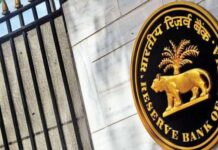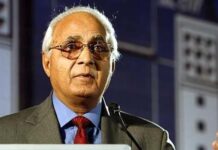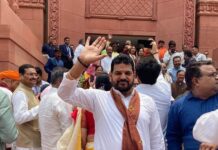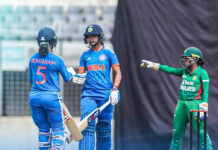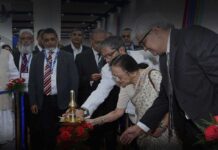Supreme Court allows the entry of women in the Sabarimala Temple:
While earlier last year the state of Kerala was under a never-like-before blockade its volatile history, struggling its way out of the flood, it was encompassed by another issue surrounded by religious campaigns belonging to a different time and space. The matter was of a forest bound temple debarring women between the ages of 10 to 50 years from entering its premises. The rationale behind this archaic rule was that women in their ”menstruating years” are impure and thus cannot offer prayers to the sacred deity. The Supreme Court in September 2018 ruled that not allowing women in menstruating years to enter the temple is a violation of the constitutional norms, allowing all women to enter the said temple. A five-judge bench delivered the judgment of the Supreme Court headed by the then Chief Justice of India Dipak Misra and including Justice R.F. Nariman, A.M. Khanwilkar, D.Y.Chandrachud and Indu Malhotra. The judgment came in a 4:1 majority, where Justice Indu Malhotra noted a dissenting opinion.
The judgment read by the then CJI Dipak Misra quoted firstly that the devotees of the Ayyappa are not a separate religious denomination. Moreover, it went ahead to rude that the approach is dualistic and against women, degrading their status. The rule in question, as laid down in Rule 3(b) of the Kerala Hindu Places of Public Worship Act, 1965, was a clear violation of the Hindu women to practice religion, which is offered under Article 25 of the Indian Constitution. Justice Chandrachud, in his concurring judgment, clarified that the protection given to Article 25 would apply to all persons and every individual in the society. The decision said the right though not absolute, cannot be limited based on gender or physiological factors. It was quoted in the judgment that the restriction placed on the entry of women ranging from 10 years to 50 years was not an essential part of the religion. Thus, devouring the Ayyappa devotees of any protection under Article 26 and allowing the entry of women in the Sabarimala temple, as the said rule was held to violate Article 21 of the constitution. Thus overturning the decision as given by the Bombay High Court in the case of The State of Bombay v. Narasu Appa Mali, saying it is ”not good in law”.
Dissenting Judgment of Justice Indu Malhotra:
While the majority inclined towards allowing women in the premises of the Sabarimala temple, Justice Indu Malhotra registered her dissenting opinion. She signalled that the issue raised in the matter would have a direct impact not only concerning Sabarimala but on other places of offering worship as well. Justice Indu considered the rule to be an issue of seep religious sentiment and said that the court shouldn’t ordinarily interfere it. She opined strongly in that direction, especially when there is no aggrieved person from that section or religion. She considered the issue to decide whether or not the bar on entry of women is an essential religious practice, to be for the religious community itself to decide and not for the court. She strictly opined against importing the notions rationality into the matters of religion. It was quoted from her opinion that:
“Balance needs to be struck between religious beliefs on the one hand and cherished principles of non-discrimination and equality laid down by constitution on the other.”
The matter was brought before the apex court in public interest litigation filed by the Indian Young Lawyers Association challenging the practice against the cherished constitutional norms of equality and the right to religion. The matter was argued upon for eight days, since July 2019. The stand of the state of Kerala was for the entry of women into the temple, which explained that any custom which excluded women or barred their entry in the temple is a violation of their right. However, on the other side, some groups did advocate for the custom supporting it. For instance, the Travancore Devaswom Board defended it, saying that it is a practice is temples across the nation to keep the menstruating women out of the temple premises. Moreover, the Ayappa Seva Sangham argued that the custom is upheld so that similar traditions are not disturbed.
Agitation across Kerala for maintaining the status quo of the rule barring entry of women:
Though a victory for the liberals, seeking equal rights for women the right-wing has translated this into a cohort to mobilize people. No later than within three weeks of the passing of the judgment by the Supreme Court, the State of Kerala witnessed widespread agitators demanding for the preservation of the status quo of the rule, as it is. There was a widespread swarming across the state of Kerala seeing men and women on the streets in what is believed to be the result of the mobilization of RSS and other Hindu outfits. Now the demand was from the CPM-led Left Democratic Front government, pressurizing them to file a review petition against the decision of the Supreme Court.
Moreover, the agitators issued an ordinance barring women in the menstruating age from entering the premises of the temple, in consonance with the 1965 rules. In a report by The Wire, it was said that the protests had exposed the ingrained obscurantism beneath the veneer of a progressive society and the cynical politics of religion that is at play. It was believed that the majoritarian Bhartiya Janta Party [BJP] was stirring a religious frenzy in the state of Kerala, which the state had never witnessed before. Vicious words were echoing in the state when famous actor Kollam Thulasi told in a rally of the National Democratic Alliance [NDA], that women trying to enter the temple must be ripped in half. He said that one part is sent to the chief minister’s office in Thiruvanthapuram and the other to New Delhi. It was described as a recurrence of the ”Ayodhya madness and north Indian barbarity”, which Kerala had never seen. In one of the firsts of the campaign that came against the judgment of the Supreme Court, was a report of the New Indian Express, where the chairman and managing directors or Express Publication called it the ”beginning of a new-age of faith-denouncing and faith-asserting litigations”.
Review of the earlier Supreme Court Judgment: Arguments for and against:
No later 56 review petitions, four fresh writ petitions and five transfer pleas were indeed filed on the decision of the Supreme Court, and now the court is set to deliver its judgment in the review hearing. After a lengthy trial, the court had reserved decision on the reconsideration of the September 2018 judgment. The bench is now being headed by CJI Rajan Gogoi, Justices RF Nariman, A.M. Khanwilakr, D.Y. Chandrachud and Indu Malhotra. The review pleas were heard in an open court after hearing the parties including Nair Service Society, Thantry of the temple, the Travancore Devaswom Board (TDB) and the state government both in favour as well against the plea of review. In a strange turn out of events, the TDB which runs the Sabarimala temple turned around its stand. It stood in support of the order of the Supreme Court allowing women of all ages to enter the shrine, saying the position is not due to ”any political pressure”. Earlier, it was the TDB which had stood with the government of Kerala opposing a batch of pleas seeking review in the landmark verdict. Though clarified, it is alleged by the right-wing organizations that the change is the stand of the TDM is because it scum to the pressure from the states’states’ CPI(M) led LDF government.
The state was represented by Senior Advocate Jaideep Gupta who said that a constitutional court should not be mothering about law and order problems as well as social disturbances. He argues on the previous rationale that the exclusion of women from the temple premises is not essential to the practice of the Hindu religion. At the very beginning of the judgment, the bench presiding over the matter had made it clear that it’d hear only the parties to the review petition and urged to limit the arguments on the grounds for reconsideration of the judgment and not on its merits.
The Nair Service Society seeking a review was represented by Senior advocate K. Praasaran who argued that Article 15 of the Constitution prepares a ground throwing open for public the secular institutions of the country but has nothing to do with the religious institutions. He also argued for a review saying that Article 17 which essentially is about the abolition of the practice of untouchability in the society was a wrong rationale to use as the restriction was based on age and not caste. He said that the earlier judgment of the Supreme Court needs urgent review as it failed to consider the nature of the deity, which is that of a celibate or ”Naishtika Brahmachari”. Even the advocate appearing for the shrine thantry, Senior Advocate V. Giri said that the temple allows the entry of all persons inside without any exclusion of any class of citizen or caste, gender or religion. However, he said that the fundamental right to religion, including the right to worship includes due consideration to the character of the diety and every devotee cannot question this character, which is an essential religious practice.
Furthermore, he said that the fundamental right to practice religion should stand unless any practice is ”abhorrent”; only then the court is required to interfere. Another counsel for TDB’sTDB’s former chairperson, seeking a revision, senior advocate A.M. Singhvi said
“There is no exclusion of women. There is no exclusion of men. There is no exclusion of a class of men or women based on religion and caste. There is an exclusion inside a class (women). Hence Article 17 (removal of untouchability) will not apply,”
He said that with regards to constitutional morality, it is absurd for the objective application of the concept in a pluralistic Hindu society. He said that constitutional morality is subjective, not to be applied as it is but to keep in mind the essence of different religious practices. Shekhar Naphade, a senior lawyer of the Supreme Court, argued that the court is not empowered to direct a community to practise religion in a particular manner by issuing a writ of mandamus. He said that the bar on entry of women is an internal affair of a religious community worshipping a specific deity in a specific manner and cannot be questioned as has been ongoing for centuries, thus cannot be the spectacle for scrutiny. He said that no religious practice could be stopped unless it constitutes a criminal offence.


